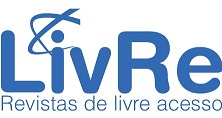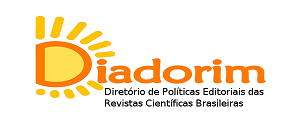ANTIMICROBIAL EVALUATION OF THE ETHANOL EXTRACT OF PEQUI PULP (Caryocar coriaceum Wittm.) AGAINST PATHOGENIC MICROORGANISMS
DOI:
https://doi.org/10.20873/rtg.v12i27.15734Keywords:
Caryocar coriaceum Wittm, Pequi, Oral Health, Antimicrobial activityAbstract
Microbial resistance to antimicrobials has been a growing threat to the effective treatment of an ever-increasing range of infections caused by bacteria and fungi; the reduced sensitivity of antibacterials and antifungals is making it difficult for many patients to treat. Pequi, in addition to cooking, is used for therapeutic purposes as an anti-inflammatory and antimicrobial in combating emergencies. However, little is known about the antimicrobial effects of its pulp and its phytochemical composition. The present work aimed to investigate the antimicrobial action of the ethanolic extract of the pulp of C. coriaceum Wittm. against two bacterial and one fungal strains of interest to oral health. The extract of the fruit of C. coriaceum was administered by experiment using a Soxhlet extractor and the antimicrobial activity was evaluated by the disk-agar diffusion technique on Enterococcus faecalis, Streptococcus pyogenes and Candida albicans. Yeast C. albicans was inhibited at the highest concentration, 25.2 mg. mL-1 of extract, with the average of halos being 10 mm; for the bacterium E. faecalis, the concentration level was verified at concentrations of 25.2 and 2.52 mg. mL-1 with halos of 8 and 6 mm, respectively. The results verified that the ethanolic extract of the C. coriaceum pulp presents indicative of antifungal and antibacterial activity. Further studies are suggested regarding its potential antimicrobial effect.
References
ABACHI S, L. S.; RUPASINGHE, H.P. Molecular Mechanisms of Inhibition of Streptococcus Species by Phytochemicals. Molecules. v. 21, n. 2, p. 210-2015, 2016.
ALVES, A.M.; FERNANDES, D.C.; SOUSA, A.G, et al. Características físicas e nutricionais de pequis oriundos dos Estados de Tocantins, Goiás e Minas Gerais: Brazilian J. of Food Technology. v. 17, n. 3, p. 198-203, 2014.
ALVES, D.R.; MAIA, M.S.; TOMIOTTO-PELLISSIER, F, et al., Composição Flavonoide e Atividades Biológicas de Extratos Etanólicos de Caryocar coriaceum Wittm., Uma Planta Nativa do Bioma Caatinga: Evid Based Complement Alternat Med. Ano 4, n. 1, 2017.
ANAND, G.; RAVINANTHAN, M; BASAVIAH, R, et al., Efeitos antimicrobianos e citotóxicos in vitro de Anacardium occidentale e Mangifera indica na higiene bucal. J. Pharm Bioallied Sci. v. 7, n. 1., p. 69-74, 2015.
ANDRADE, E.D. Terapêutica medicamentosa em odontologia. 3. ed. São Paulo: Artes Médicas, 2014.
AQUINO, L.P.; FERRUA, F.Q.; BORGES, S.V. et al. Influência da secagem do pequi (Caryocar brasiliense Camb.) na qualidade do óleo extraído. Food Sci. Technol. v. 29, n. 2, p. 354-357, 2009.
ASSIS RC, LIMA GSR, SIQUEIRA ACP, et al. Determination of water-soluble vitamins and carotenoids in Brazilian tropical fruits by High Performance Liquid Chromatography. Heliyon. v. 28, n. 6, p. 53-67, 2020.
AVILA, M.; OJCIUS, D.M.; YILMAZ, O. The oral microbiota: living with a permanent guest. DNA Cell Biol. V. 28, n. 8, p. 405-411, 2009.
BAPTISTA, A.; GONÇALVES, R.V.; BRESSAN, J. et al. Antioxidant and Antimicrobial Activities of Crude Extracts and Fractions of Cashew (Anacardium occidentale L.), Cajui (Anacardium microcarpum), and Pequi (Caryocar brasiliense C.): A Systematic Review. Oxid Med Cell Longev. v. 2018, n. 2, p. 01-13, 2018.
BLANC V.; ISABAL, S.; SANCHEZ, M.C, et al. Characterization and application of a flow system for in vitro multi species oral biofilm formation. J Periodontal Res v.49, n.2, p. 323-332, 2014.
CARDOZO, C.M.L.; INADA, A.C.; MARCELINO, G. et al. Therapeutic Potential of Brazilian Cerrado Campomanesia Species on Metabolic Dysfunctions. Molec. v.23, n.9, p. 23-36, 2018.
CHISTÉ, R.C.; MERCADANTE, A.Z. “Identificação e quantificação, por HPLC-DAD-MS / MS, de carotenóides e compostos fenólicos da fruta amazônica Caryocar villosum”. J. of Agricul and Food Chem. v. 60, n.3, p. 84-92, 2012.
COSTA, G.M.J.; BRITO, S.A.; NASCIMENTO, E.M.M. et al. Antibacterial Properties of Pequi Pulp Oil (Caryocar coriaceum – Wittm.), Inl J. of Food Prop. v. 14, n. 2, p. 39-52, 2011.
GBD (Global Burden of Disease), 2017, Disease and Injury Incidence and Prevalence Collaborators. et al. Lancet; v. 392, n. 10159, p. 1789-1788, 2018.
GOMES, A.B.; RIBEIRO, I.A. Evaluation of antifungal potential of oil of the species Caryocar coriaceum front of candida species isolated in the oral cavity of oncological pediatric patients in antineoplastic treatment. Int J. of Ped Res and Rev, v. 2, n. 11, p.1-9, 2019.
GONÇALVES, A.P.P.; VIEIRA, G.D.; CUNHA, P.N.A. et al. Caracterização fitoquímica e atividade antimicrobiana de extratos de Solanum subinerme (Solanaceae) Rev. Bras. Pesq. Saúde, v. 18, n. 2, p. 8-16, 2016.
KANE, S,F. The effects of oral health on systemic health. Gen Dent. v. 65, n. 6, p. 30-34, 2017.
KANTH, M.R.; PRAKASH, A.R.; SREENATH, G. et al. Efficacy of Specific Plant Products on Microrganisms Causing Dental Caries. J Clin Diagn Res. v. 10, n. 12, p.1-3, 2016.
KRAMER PF, FELDENS CA, FERREIRA, S.H. et al. Exploring the impact of oral diseases and disorders on quality of life of preschool children. Comm Dent Oral Epidemiol. v. 41, n. 4, p.327-335, 2013.
MADIANOS PN, BOBETSIS YA, KINANE DF. Generation of inflammatory stimuli: how bacteria set up inflammatory responses in the gingiva. J Clin Periodontol. v. 32, suppl. 6, p. 57-71, 2005.
MARSH, P.; MARTIN, R. Microbiologia oral. 6. ed. Rio de Janeiro: Elsevier, 2018.
OLIVEIRA, C.; PINTO, E.; REZENDE, P. Compostos bioativos de extratos de pequi de diferentes regiões do cerrado. Encicl. Bio, v. 14, n. 25 p. 1799-1813, 2017.
PAULA-JUNIOR, W.; ROCHA, F.H.; DONATTI, L. et al. Leishmanicidal, antibacterial, and antioxidant active.ities of Caryocar brasiliense Cambess leaves hydroethanolic extract. Rev. Bras. Farmacogn. v. 16, suppl. 16, p. 625-630, 2006.
PAULO, C.R.; PEREIRA, F.F.; MACHADO, M.S. et al. Composição química e atividade antibacteriana do óleo fixo da amêndoa de Caryocar coriaceum, In:
REUNIÃO REGIONAL DA SBPC NO CARIRI, LXIX, 2017, Cariri, CE. Anais…Cariri. 4.03.02 – Farmácia / Farmacognosia.
RIBEIRO, D.M. Propriedades físicas, químicas e bioquímicas de Pequi (Caryocar brasiliense Camb.) de diferentes regiões do Cerrado. Dissertação (Mestrado) – Universidade de Brasília, UnB, Brasília. 2011.
ROCHA, L.B.; MELO, A.M.; PAULA, S.L. et al. Gallic acid as the major antioxidant in pequi (Caryocar brasiliense Camb.) fruit peel. Rev. Bras. Plantas Med. v. 17, n. 4, p. 592-509, 2015.
RODRIGUES, M.A.; CARDOSO, F.M.; RACHEL, M.N. et al. Perfil fitoquímico e quantificação de compostos bioativos nos extratos da folha da Caryocar Coriaceum. SIMPÓSIO LATINO – AMERICANO DE QUÍMICA & V WORKSHOP DE BIOTECNOLOGIA DA REDE BIONORTE, Anais…Simposio Latinoamericano de Química: “Los desafíos de la investigación en América Latina" even 3 editor, 2021.
SARAIVA, R.A.; LEMOS, I.C.S.; FIGUEIREDO, P.R.L. Caryocar coriaceum W. In: Biological Chemistry, Regional University of Cariri, Crato, Ceará, Brazil. Springer Nature B.V. Medical and aromatic Plants of South América, Medicinal and Aromatic Plants of the Word 5. p. 153-162, 2018.
.
SARQUIS, F.R.; SOCORRO, R. do; RODRIGUES, S.I. et al. The Use of Medicinal Plants in the Riverside Community of the Mazagão River in the Brazilian Amazon, Amapá, Brazil: Ethnobotanical and Ethnopharmacological Studies. Evid Based Compt Alter Med. v. 19, n. 4, p. 1-25, 2019.
TOMIOTTO-PELLISSIER, F.; ALVES, D.R.; MIRANDA-SAPLA, M.M. et al. Caryocar coriaceum extracts exert leishmanicidal effect acting in promastigote forms by apoptosis-like mechanism and intracellular amastigotes by Nrf2/HO-1/ferritin dependent response and iron depletion: Leishmanicidal effect of Caryocar coriaceum leaf exracts. Bio Pharma. . v. 8, n. 2, p. 62-72, 2018.
Downloads
Published
How to Cite
Issue
Section
License
Copyright (c) 2023 Tocantinense Journal of Geography

This work is licensed under a Creative Commons Attribution-NonCommercial-NoDerivatives 4.0 International License.
Revista Tocantinense de Geografia does not remunerate any author for the publication of their texts. The contents of the texts published in this journal are the responsibility of the authors.








.png)












